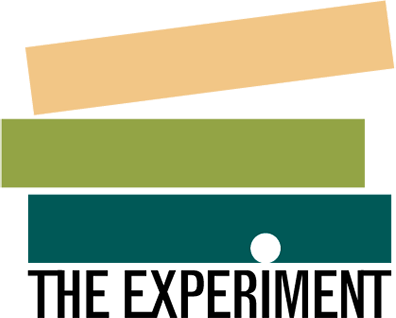Many of us go through our days not intrigued by normal objects and occurrences. A strong gust of wind messes up our hair, and we rarely ever stop to wonder what creates wind or what determines its force; we read the nutrition facts on our snack bars without questioning how someone can determine the number of calories in food products; we enjoy a cold beverage in the summer with no interest as to how our ice cubes float; and we simply accept that the word “pounds” is abbreviated “lb.”
Indeed, we’ve become so used to being surrounded by fascinating phenomena that we fail to stop and think about the science that makes it all possible. Enter Larry Scheckel. In his book, Ask a Science Teacher, Scheckel shares the answers to 250 of questions about how everyday things work—tackling human anatomy, physics, space and technology in a fun, and easy-to-grasp tone.
In hopes of awakening your curiosity, we’re sharing some of Larry’s most interesting Q&As from Ask a Science Teacher. Now those of you who should have raised your hands in science class, but didn’t, will have fewer questions on your mind.
Question #19: Why does blood in our veins look blue?
When I was a kid growing up on a farm, we kids would argue about this. The general consensus was that blood was blue when it was in our body but would turn red when it hit the air. Well, we were mostly wrong.
It turns out that blood is never blue. Its color—either red or darker red—is determined by the amount of oxygen and carbon dioxide in the blood. We know that blood contains hemoglobin, which contains iron atoms (see page TK). (Rock formations with a high iron content are reddish in color.) In the lungs, there is a lot of oxygen available, which bonds with the hemoglobin. So blood leaving the lungs through the pulmonary veins—the only veins to carry oxygenated rather than deoxygenated blood—returns to the heart high in oxygen content and bright red in color. The heart pumps this red blood to the rest of the body through arteries to deliver oxygen to tissues, organs, and muscles, where it is used up.
The blood returning in a separate set of veins is depleted of oxygen, which has been replaced with plenty of carbon dioxide, giving the blood a much darker red color. And when we look at our veins, the color of the blood appears bluish because some of the dark red color is absorbed by the veins and skin (This only works for veins because we can’t actually see our arteries through our skin; they have muscular walls that are much thicker than our more thin-walled veins.). Mostly blue color is transmitted.
I used to show the skin-absorption phenomenon to students in science class by taking a small glass tube and filling it with water made bright red using food dye. Both ends were capped with clay. I would place the “blood-filled” glass tube in a glass tray and slowly pour skim milk into the tray. The color of the “blood” seemed to slowly change from a reddish to a bluish tint as the milk covered the glass tube. The milk absorbed some of the longer red wavelengths of light coming from tube of “blood.” The shorter blue wavelengths of light were transmitted through the milk, yielding a bluish tint to the “blood” tube.
How do airplanes stay up in the air?
It seems hard to believe that an aircraft, like the Air Force’s C5-A cargo plane, with a gross weight of eight hundred thousand pounds, can stay aloft. How can something so big and so heavy actually get off the ground?
There are two theories of how lift occurs on a wing. Both are correct and both useful in explaining the forces on an airplane. The conventional and classic Longer Path explanation uses the Bernoulli effect. The top surface of the wing is more curved than the bottom side. Air traveling over the top of the wing has a greater distance to go—a longer path—than air passing underneath the wing. So the air over the top of the wing must travel faster than the air under the wing. The air passing over the top of the wing and from below the wing must meet behind the wing, otherwise a vacuum would be left in space.
The Bernoulli principle states that faster-moving airflow develops less pressure, while the slower-moving air has more pressure. That greater pressure on the bottom of the wing is termed “lift.” Basically, this pressure difference creates an upward suction on the top of the wing.
The competing, but complementary, theory is based on Isaac Newton’s third law of motion, the law of action and reaction, which states that “for every action there is an equal and opposite reaction.” When air molecules hit the bottom surface of the wing at a glancing angle, they bounce off and are pushed downward. The opposite reaction is the wing’s being pushed upward. Hence, we have lift. It’s similar to BBs hitting a metal plate—they’ll rebound backward. BB’s go in one direction and the metal plate goes in the opposite direction.
As it turns out, the Bernoulli Longer Path theory is a better explanation of lift for slower-speed planes, including jet airliners. Newton’s third law is best suited for hypersonic planes that fly high in the thin air at more than five times the speed of sound. The Navy’s Korean War–era Douglas AD Skyraider was the first military plane to carry its own weight. The Douglas DC-7, put into passenger service in the early 1960s, was the first commercial plane to lift a load equal to its empty weight.
Question #226 Why do sunflowers always face the sun?
Sunflowers exhibit heliotropism. “Helios” is another word for sun. “Tropism” means a turning movement in response to an environmental stimulus. Heliotropism is the daily motion of plant parts in response to the movement of the sun. Heliotropic sunflowers track the sun across the sky from east to west. At night, the sunflower head is oriented in a random direction. But at dawn, it turns again toward the east. Sunflowers show this sun-following tendency only in their bud stage. In the blooming stage, heliotropism ends and the stem is frozen, typically toward an eastern direction.
The movement of the sunflower head is performed by a group of motor cells in a flexible segment just below the flower head, called the pulvinus. The motor cells force potassium ions into tissues, thereby increasing their cell pressure. The segment can flex because the cells on the side in shadow elongate due to this rise in pressure.




